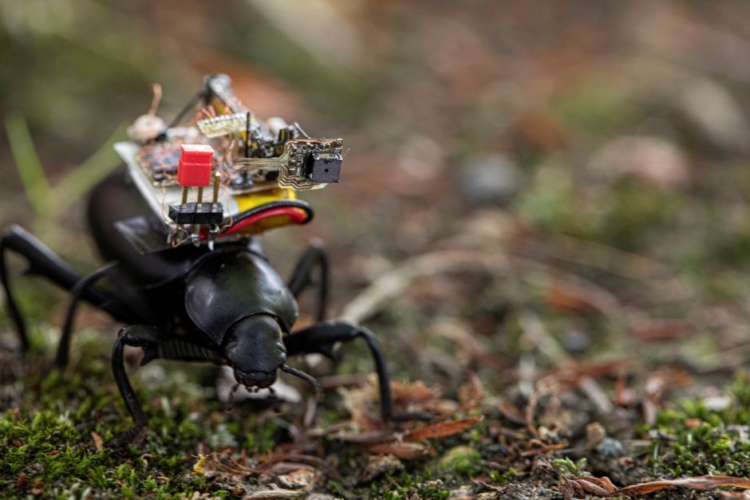The camera, which streams video to a smartphone at 1-to-5 frames per second, sits on a mechanical arm that can pivot 60 degrees. This allows a viewer to capture a high-resolution, panoramic shot or track a moving object while expending a minimal amount of energy. To demonstrate the system, which weighs about 250mg the team at the University of Washington mounted it on top of live beetles and insect-sized robots. The results are published in Science Robotics.
Cockroach-inspired robot squeezes into rescue missions
"We have created a low-power, low-weight, wireless camera system that can capture a first-person view of what's happening from an actual live insect or create vision for small robots," said senior author Shyam Gollakota, a UW associate professor in the Paul G. Allen School of Computer Science & Engineering. "Vision is so important for communication and for navigation, but it's extremely challenging to do it at such a small scale.”
According to co-author Sawyer Fuller, a UW assistant professor of mechanical engineering, vision in animals requires a lot of power. Flies, for example, use between 10 and 20 per cent of their resting energy to power their brains, most of which is devoted to visual processing.
“To help cut the cost, some flies have a small, high-resolution region of their compound eyes,” Fuller said in a statement. “They turn their heads to steer where they want to see with extra clarity. This saves power over having high resolution over their entire visual field."
To mimic an animal's vision, the researchers are said to have used a tiny, ultra-low-power black-and-white camera that can sweep across a field of view with the help of a mechanical arm. The arm moves with the application of a high voltage, which makes the material bend and move the camera to the desired position. Unless the team applies more power, the arm stays at that angle for about a minute before resuming its original position.
"One advantage to being able to move the camera is that you can get a wide-angle view of what's happening without consuming a huge amount of power," said co-lead author Vikram Iyer, a UW doctoral student in electrical and computer engineering. "These images are also at a higher resolution than if we used a wide-angle lens."

The researchers attached their removable system to the backs of a death-feigning beetle and Pinacate beetle, and the camera and arm were controlled via Bluetooth from a smartphone up to 120m away.
"We made sure the beetles could still move properly when they were carrying our system," said co-lead author Ali Najafi, a UW doctoral student in electrical and computer engineering.
The beetles also lived for at least a year after the experiment ended.
"We added a small accelerometer to our system to be able to detect when the beetle moves. Then it only captures images during that time," Iyer said. "If the camera is just continuously streaming without this accelerometer, we could record one to two hours before the battery died.”
The researchers also used their camera system to design the world's smallest terrestrial, power-autonomous robot with wireless vision. This insect-sized robot uses vibrations to move and consumes almost the same power as low-power Bluetooth radios need to operate.
The team found that the vibrations shook the camera, which distorted captured images. The researchers solved this issue by having the robot stop momentarily, take a picture and then resume its journey. With this strategy, the system was still able to move about 2 to 3cm per second and had a battery life of about 90 minutes.




Swiss geoengineering start-up targets methane removal
No mention whatsoever about the effect of increased methane levels/iron chloride in the ocean on the pH and chemical properties of the ocean - are we...